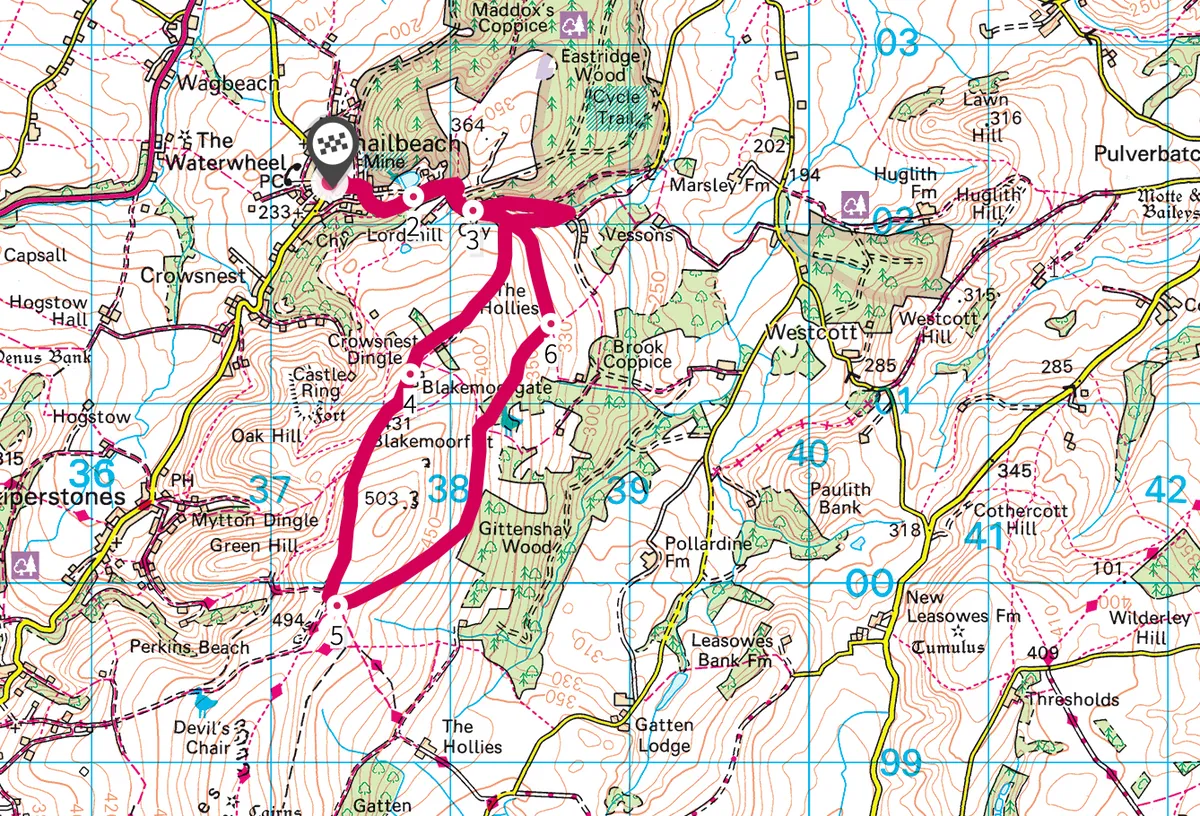From deep within a mass of worm-riddled timber – apparently shipwrecked in squally showers – on a hillside not far from the Shropshire village of Snailbeach, a small spiky green leaf somehow sprouts. There is life in this old holly yet.
Britain’s most ancient holly trees grow on the lower slopes of Green Hill, Win Hill and The Pasture close to the Shropshire Hills’ northerly limits.
Here you will find a holly pasture (hollins or holm) of some 200 veteran trees, at least 250 years old. Some, believed to be approaching 400 years of age, are among the oldest in Europe.
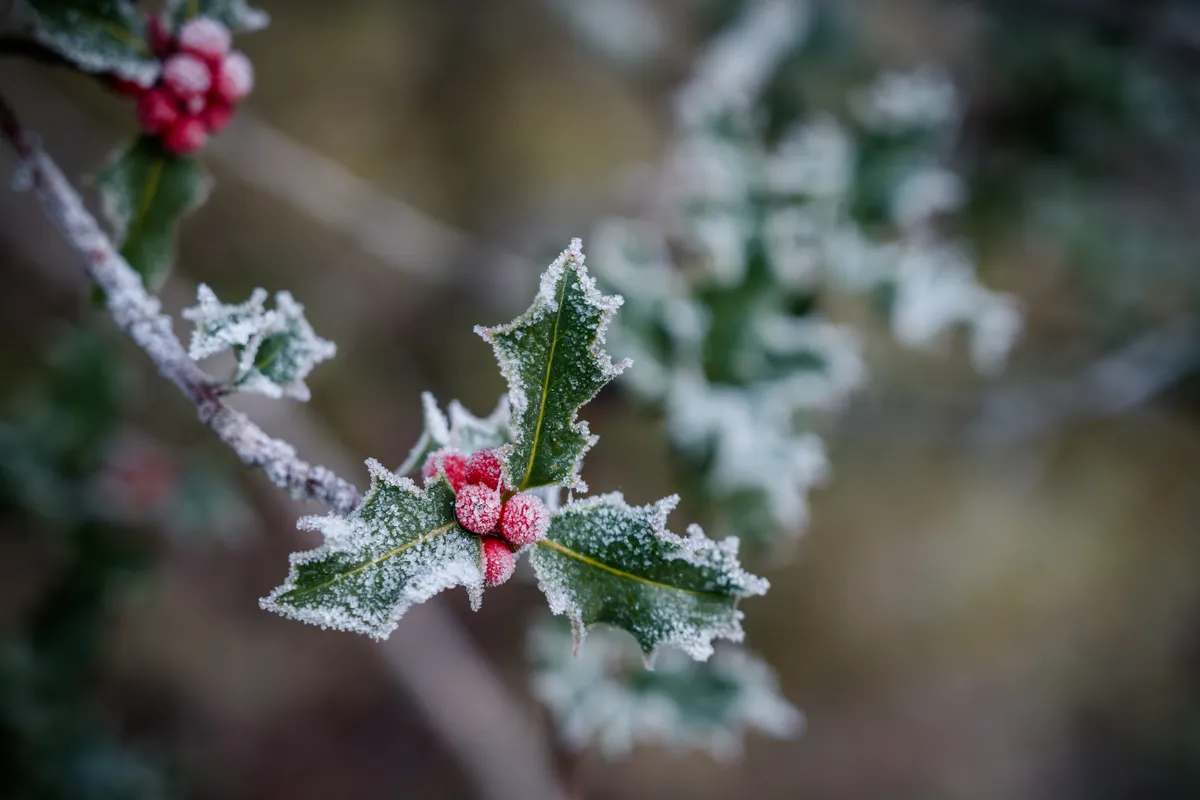
Holly folklore
Holly enriches our folklore. Some claim it was a goblin and lightning deterrent, and others that it was allowed to grow tall and prickly to hinder witches who got about the countryside by walking on hedges. Reverence of its evergreen properties has endured.
After all, it was – according to tradition – the holly king who wrested rule from the oak king to reign over the winter months. Holly was among the greenery brought indoors to nurture nature spirits, in faith that spring would come. And it is still brought in now, for Christmas.
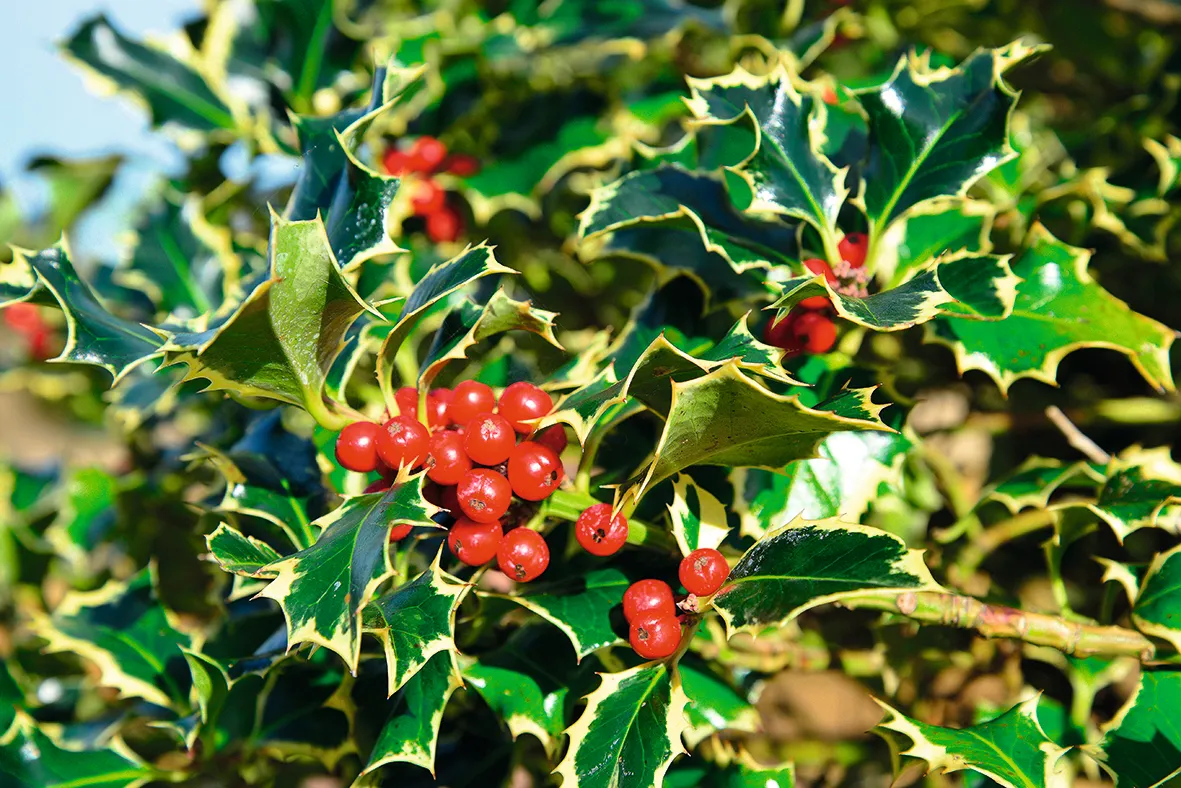
The Hollies Nature Reserve walk
5.3 miles/8.5km | 3.5 hours | moderate
1. Reclaimed mines
To see the holly trees yourself, head east from Snailbeach. The village is well served by Minsterley Motors buses between Shrewsbury and Bishop’s Castle.
Ascend through the old lead mines. This atmospheric heritage site of engine house, compressors, chimneys, rail tracks, shafts and slagheaps is a rich blend of restoration and reclamation. While dignified ruins remember the 500 people who mined lead from 1,000-foot-deep shafts, flocks of finches and chattering sparrows now enjoy the proliferation of shrubs and seed-heads.
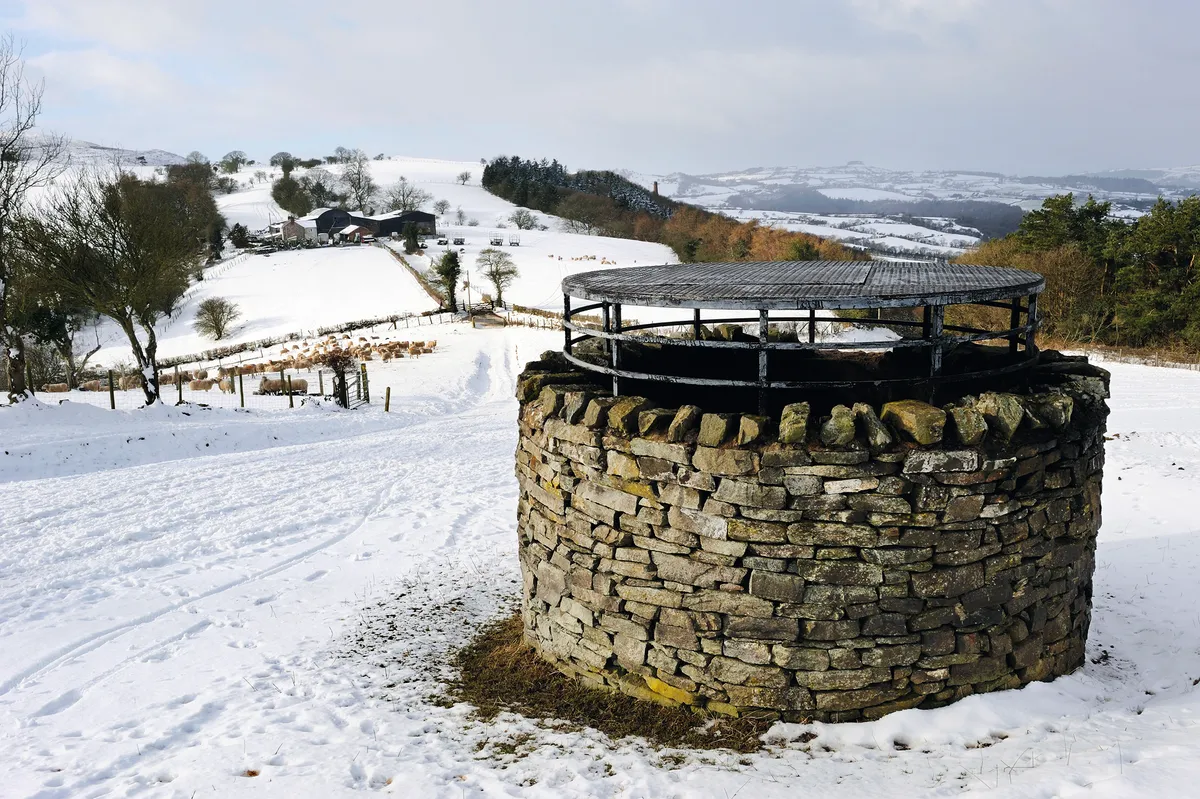
2. Chapel to farm
Climb the road through mixed woodland, which has supplanted the industrial activity and pollution. Turn south past the entrance to Lordshill Farm and into The Hollies, managed by Shropshire Wildlife Trust.
Note Lordshill chapel on your right. Most miners couldn’t afford elaborate headstones, but the graves give some indication of how tough life was in the Industrial Age (1760s onwards), when life expectancy for a lead miner was about 45, and cattle and wildlife, too, suffered from lead poisoning.
Turn left, following an Elsie’s Walk waymark. You are in holly territory now, though here they are hard to spot, so dense and rich is the arboreal mix. Drupes (holly berries) are not the only red fruit – song and mistle thrushes, tits, fieldfares, blackbirds, redwings, waxwings and finches can choose from holly, rosehip, rowan, elder and hawthorn berries.
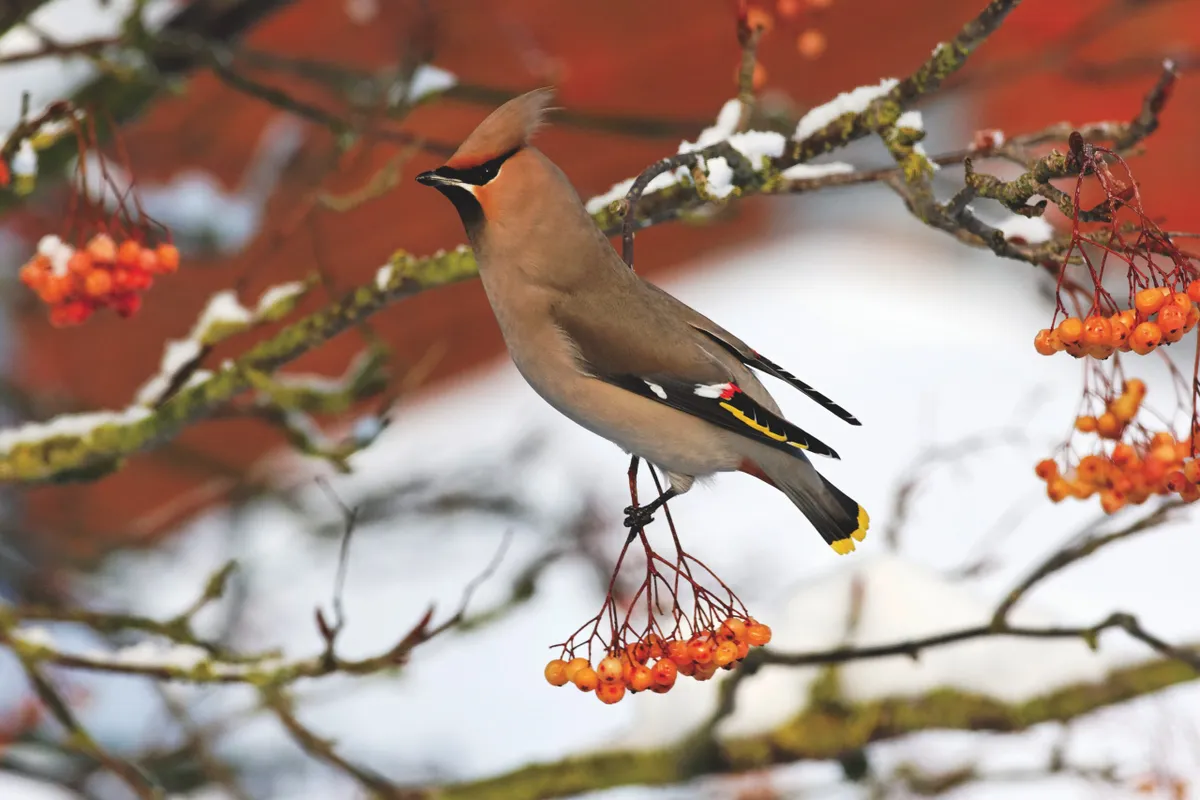
3. Holly wreaths
On reaching Upper Vessons Farm, turn immediately right and return to the main track. The hollies here are less wrecked than on the summit. Sometimes swamped by hazel and elder, they trail long creeper-like stems, their growth thick and bushy. The pollarding by miners that prolonged their life expectancy has produced dense growth.
On the hill, the cracked and fissured trees are exposed to Stiperstones’ weather, and protected from livestock by fences. To support their protection, you can sponsor a holly tree.
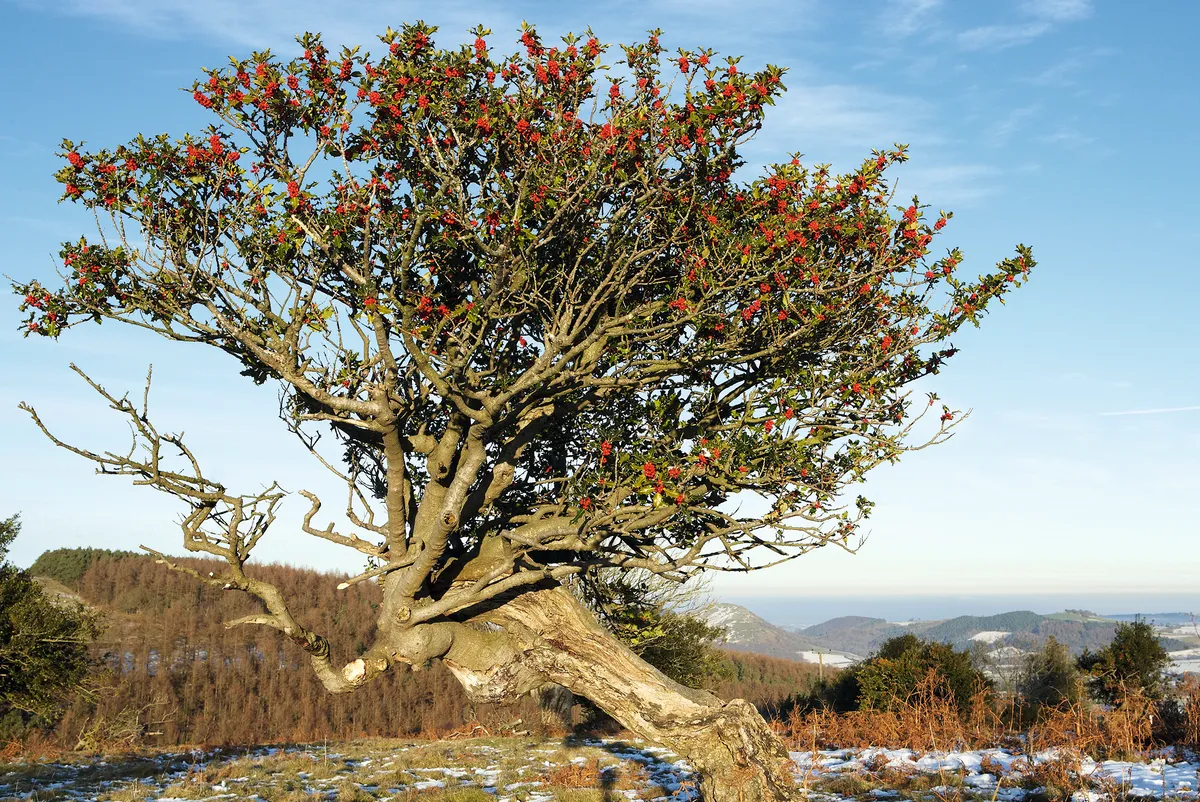
Holly is dioecious, meaning that male and female flowers occur on different trees. Drupes develop on female trees after the flowers have been pollinated by insects.
Taking a south-west trajectory, head for the shelterbelt of pines where, in squally weather, you will meet cattle sheltering. Managed browsing is an important part of Stiperstones Nature Reserve conservation. Continue through the gate.
You may also like:
4. Moorland vista
The cottages – known as squatters’ cottages – at Blakemoorgate were built by miners. Abandoned in the 1950s, they were restored in 2011 by English Nature.
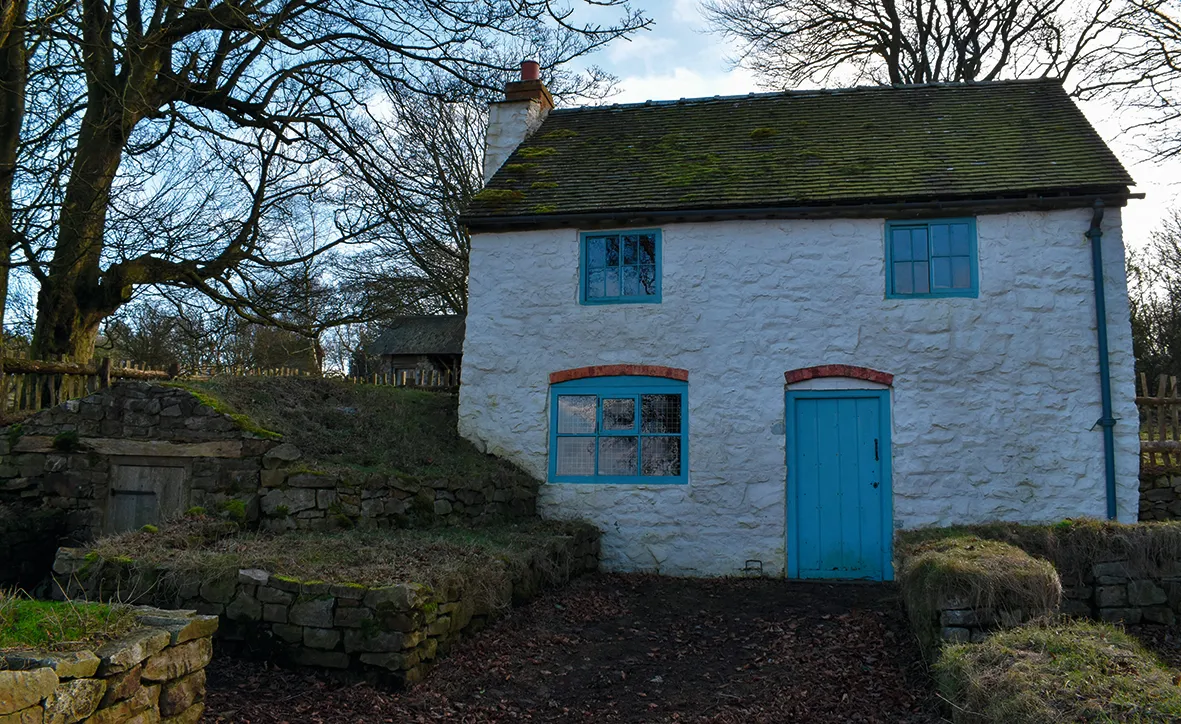
Continue along the ridge to Shepherds Rock for a typical Stiperstones experience. Several tors of frost-shattered quartzite rock (of which Shepherd’s Rock is one) crown this hill of raised moorland, where whinberry, cowberry, crowberry, heather and western gorse grow. There are stunning views into Wales.
5. Ancient boundaries
Turn left downhill and bear north-east to Brook Vessons. You will need to keep to the bridleway, but don’t miss the opportunity to first explore this secluded Nature Reserve, rich in its own arboreal treasure, and home to bats and dormice to boot. You will find more hollies here, but of particular note are the ancient crab apple, birch and rowan, sheltered from south-westerlies by the hill. The trees are grown-out hedges, remembering the miners’ old boundaries and tracks.

6. Wizened veterans
Join the north-westerly path back through The Hollies to rejoin your original route, but take your time. This is where you will find some of the most impressively wizened veterans. Look for those split asunder by rowan trees, whose seeds have been excreted (thus planted) into crutches and fissures by thrushes.
All that is left now is to retrace your steps from Lordshill Chapel back to Snailbeach.
The Hollies walking route and map
